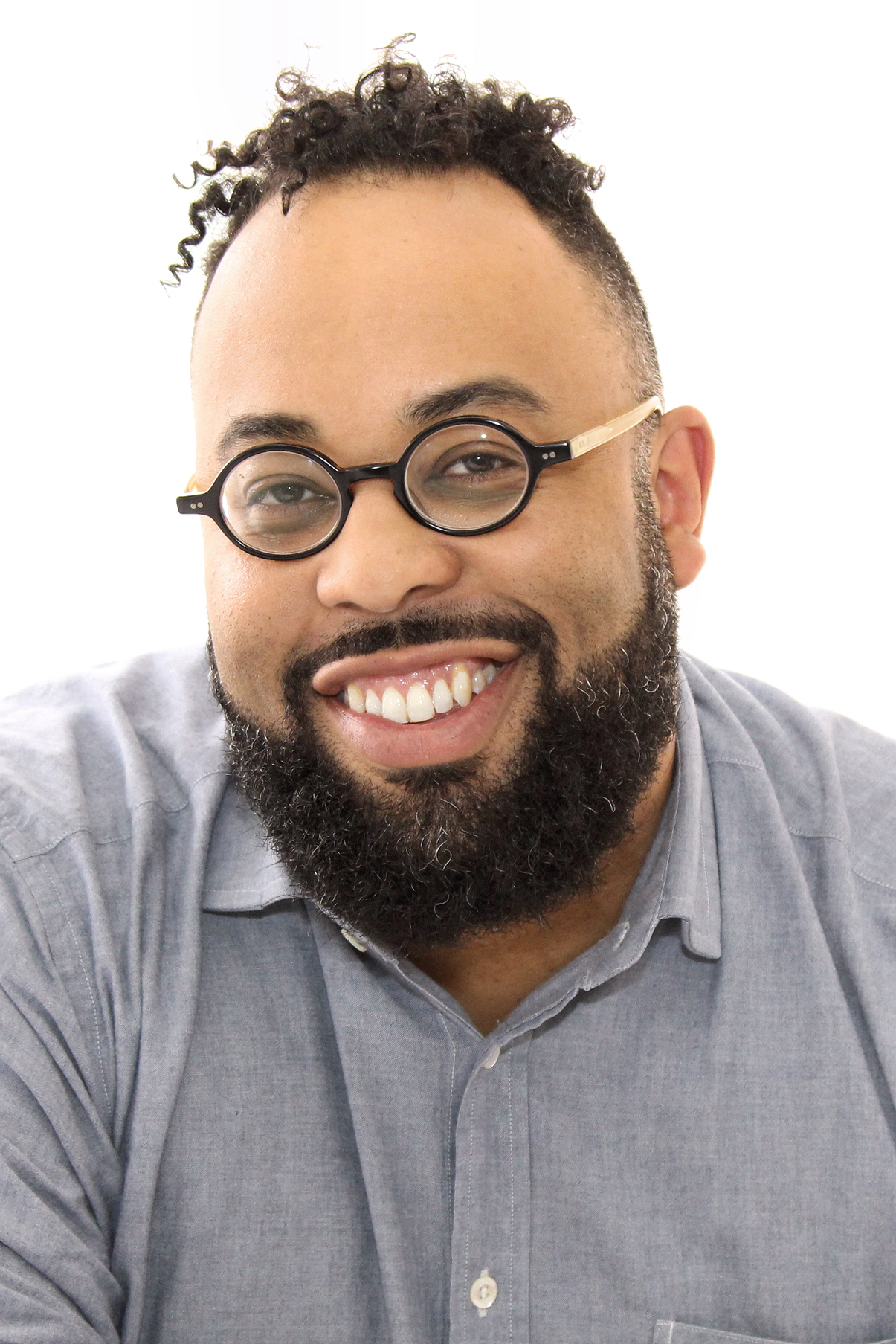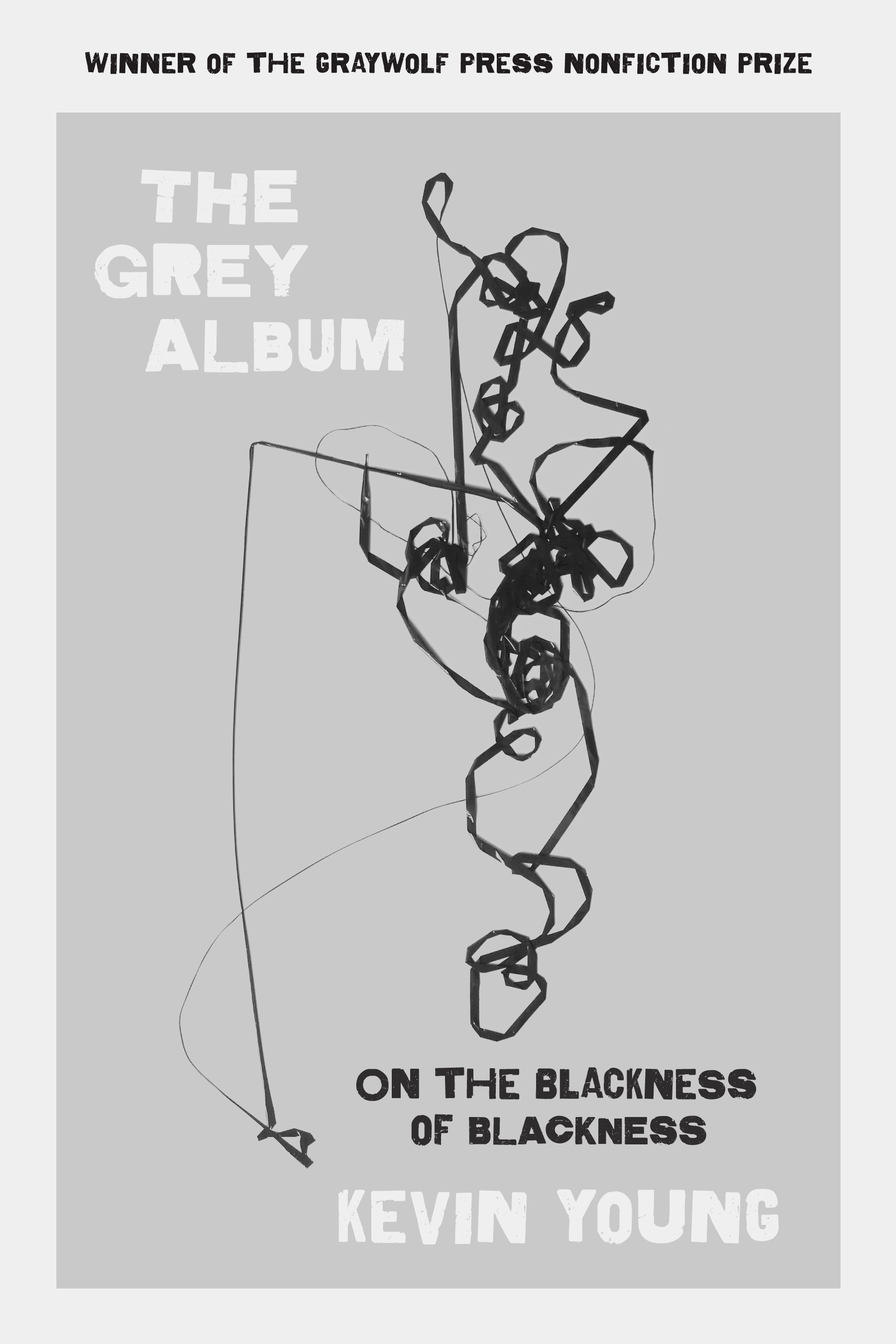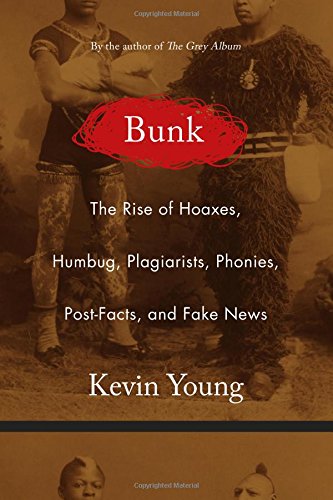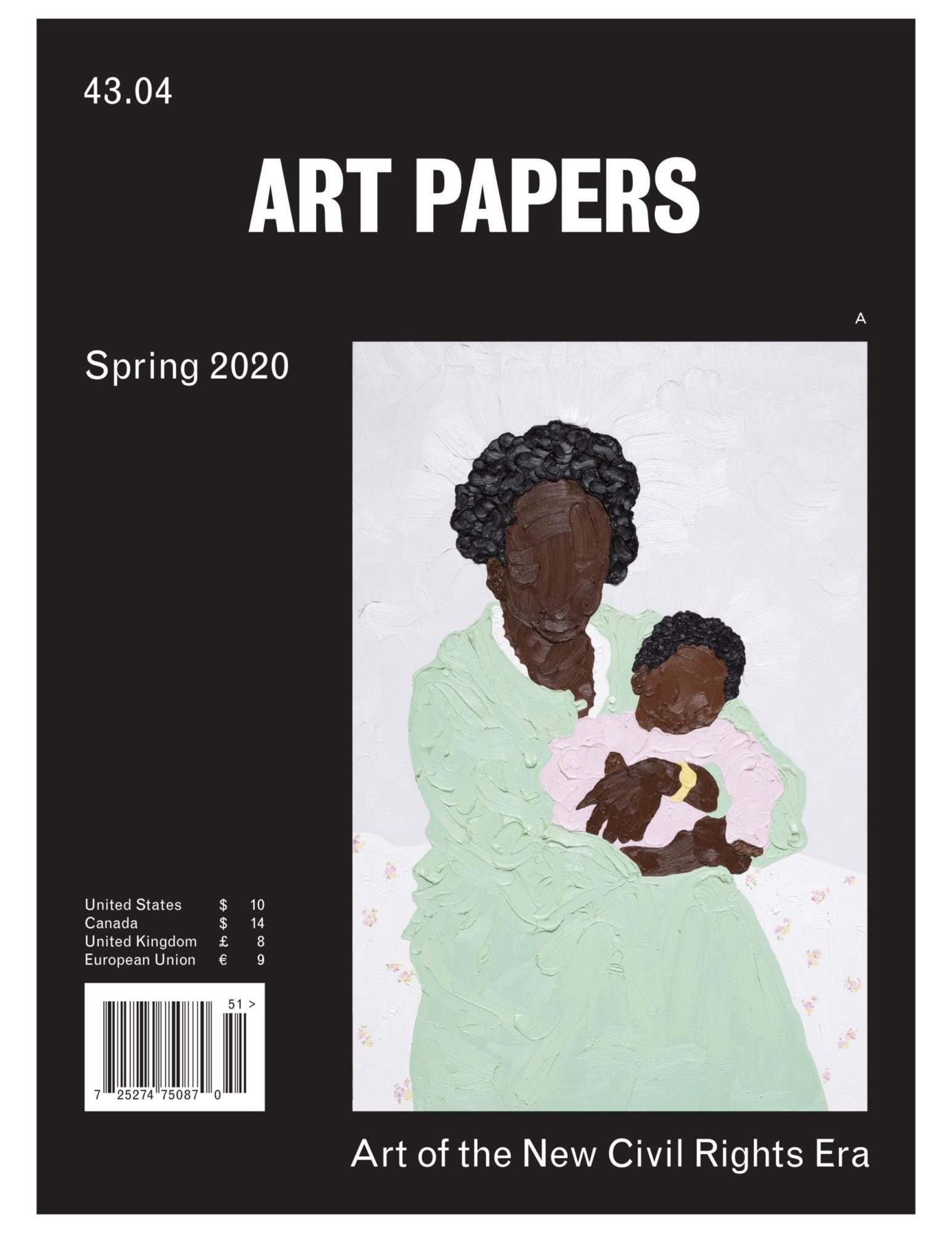Kevin Young: The Opposite of a Hoax
Share:
Kevin Young, director of the Schomburg Center for Research in Black Culture and an author, published his nonfiction book Bunk: The Rise of Hoaxes, Humbug, Plagiarists, Phonies, Post-facts, and Fake News in 2017. The term hoax has recently rejoined political dialogue via President Donald Trump’s frequent use of the term in reference to topics as broad as his impeachment trial, coronavirus, and Bureau of Labor Statistics employment data during the Obama administration. Young addresses the race-based advent of the term hoax in the United States, and champions the importance of preserving truth and distinguishing it from fiction.
Courtney McClellan: I want to discuss the utility of fiction—what fiction can do. These questions focus on your book Bunk, but I wanted to begin with a question about [your 2012 book] The Grey Album: On the Blackness of Blackness. In The Grey Album you write about fiction as a means to create or find freedom, and more specifically about storying. What is storying? And how might fiction offer a path to freedom?
Kevin Young: In Louisiana—where my family’s from—you couldn’t say to someone “You lie,” much less a grown-up. Instead you’d say “You story.” This, plus the fact that an African American folktale is often called a lie, informed my coming up with the improvisatory style of what I call storying: one way [of] telling a story, but also a larger idea, the ways that we fictionalize in order to free ourselves. Someone also said that Louis Armstrong turned the jazz solo into a story, which he would tell with his horn. I think that’s (a) really accurate and (b) powerful. All that informed this idea.
In tracing what I call the storying tradition, I wanted to look at the ways in which codes and double meanings coursed through African American culture, starting with the spirituals [and going] all the way to hip-hop. On one hand the enslaved “Black and unknown bards” are singing “Swing Low Sweet Chariot,” and on the other hand they’re also saying, you know, “We’re going to leave tomorrow.” Storying creates freedom, and it also, I think, is a function of it.
Author Kevin Young at the 2017 Texas Book Festival [photo: Larry D. Moore, CC BY-SA 4.0., courtesy of Wikimedia Commons]
CM: What led you to write Bunk, and how did writing it overlap with the 2016 election?
KY: When I was writing The Grey Album, I started thinking about: what’s hoaxing? How’s that different from storying? But I’m happy I didn’t try to shoehorn that part in. I wanted to meditate further on this idea. People often said there was this blurry line between fact and fiction, when that wasn’t really true. And that’s one of the things that I try to do in both the books—to say that there are some clear lines that I think storying purposely crosses, but to act like there isn’t a line is strange.
I had this hunch that hoaxes were not about what they said they were. And of course they aren’t, because they’re not telling the truth. The more I started looking at it, the more I realized that they really mirrored the history of race and our modern notions of race in the West. These are fairly recent notions, dating from the 18th century, and almost to the very same decade as the invention of the term hoax. I don’t think that’s an accident. In the book, I trace [these] linked phenomena from P.T. Barnum to the present.
I had finished most of the book, but the hoaxes kept coming. At a certain point I told my editor, “I’ve just got to stop” because there’s new a hoax every week! I remember, for instance, the case of Rachel Dolezal, the woman who was claiming she was of African descent though she is by all accounts White. I thought, “Man, do I really have to write about her?” And then I ended up writing an essay about her and, after some convincing, put her in the book. I’m glad now that that part ended up in there. A similar thing happened with the presidential election. The book was all but done, and then after the 2016 election, the terms fake news and alternative facts took off, so it really seemed like a lot of the things I had predicted and said were about to happen, happened. That was a strange feeling. It also meant I had to write the book’s coda—I end with the notion that the truth is a muscle, one we need to learn how to exercise once more and strengthen.
CM: You note in the book that the hoax feels particularly American. I wonder if you could talk a little bit about that.
KY: I think … a few things contribute to the particular Americanness of the hoax. One is this tradition—that I think P.T. Barnum perfected—of hucksterism, where hoaxing meets entertainment meets capitalism. This is exemplified in the saying, “Every crowd has a silver lining,” [which is widely attributed to Barnum]. P.T. Barnum also perfected the American notion that everyone’s an expert. “You can decide for yourself whether this is real or not.” And I think we’re seeing, now, almost the opposite, which is that no one’s an expert. Expertise is looked down upon. Whether from scientists, historians, journalists—we’re constantly told that things that are true aren’t accurate, or somehow don’t feel accurate. And that’s really worrisome and hard to combat.
This, I think, comes from the American notion of individualism—that you’re your own person, that you get to decide—as well as our idea of self-invention. It’s hard to say to someone “You can’t pretend to be Native” if there’s a notion in the culture that “You can be anything you want to be!” Around race, and the hoax, circulate these questions of power, and White people claiming things for Native peoples or Black peoples, including being them.
CM: Could you explain what borrowed trauma is, and why a hoax depends upon it?
KY: It can be quite strange: you see people using trauma to explain away their prejudices. Every Halloween the Internet says, “Please don’t masquerade as another race.” And then you see people dressed up in blackface, and there’s a kind of desire and/or denial that happens. Blackface is not honorific; it’s, by definition, racist. But at the same time it expresses this weird conflict: on the one hand, desire for Blackness, and on the one hand, denial and elimination. Ralph Ellison says that blackface is an exorcism for slavery. And I think that’s a pretty accurate working definition.
In the book I trace blackface pretty specifically to 1835. It’s also a big year for hoaxes, and a big year for Barnum. Technology, entertainment, race, blackface: all of these collide at the same time and speak to the Americanness of the hoax.
CM: I first started reading Bunk right around [the time of] the Elizabeth Holmes and Theranos scandal, and I wondered if she was going to be addressed.
KY: Yeah, I realized that I could keep adding to it. Luckily the John Carreyrou book about Theranos, Bad Blood: Secrets and Lies in a Silicon Valley Startup, is really tremendous. I think Carreyrou has done a wonderful job at laying out just how someone in that situation not only fakes—but also gets people to believe in—their story. It is a very American tale: “I’m going to create this ingenious thing. I’m going to become a self-made person.” She was the [youngest] female billionaire for a time. But at the same time, all of it was on paper and none of it was real. And, worse, her behavior I would liken to Lance Armstrong, who had this eerily similar, vampiric, blood-based kind of fiction in his blood-doping. He was protecting himself and conning people, but he was also trying to destroy people’s lives out of fear. She was doing much the same.
Kevin Young, The Grey Album: On Blackness of Blackness, 2012, 476 pages, published by Graywolf Press
Kevin Young, Bunk: The Rise of Hoaxes, Humbug, Plagiarists, Phonies, Post-Facts, and Fake News, 2017, published by Graywolf Press.
CM: Right. There were so many layers of borrowed trauma. She would tell this story about her uncle that wasn’t really true. Her product promised to help sick people or allow people medical access. It was all sort of built on a “fake it ’til you make it” philosophy.
KY: That’s what bothers me so much about some other hoaxes. A lot of [their perpetrators] act like they’re just larks. In 1835 P.T. Barnum displayed Joice Heth—a Black woman he probably enslaved—pretending she was the nursemaid of President Washington, which would have made her 161 years old. We are a fairly young nation, so in 1835 people are looking back to 1776, to George Washington, asking, “Where are we? Who are we?” She was extremely popular. After she died, likely from exposure, he took her body to New York and had her autopsied in a medical theater and charged admission. He revealed that she was of normal advanced age, which of course he already knew, but he made the revealing of the hoax another, lucrative part of the hoax. He ultimately showed how hoaxes are not frivolous, but life or death.
CM: And the monetizing of hoaxes—it’s high-stakes finances.
KY: People can make a lot of money, billions.
CM: One thing you note is that the hoax also requires a moment of reveal for it to be “respected” as a hoax. What role does the debunker—the person who reveals—play?
KY: Many of the hoax journalists or the fake memoirists writing false accounts were caught by people in the genre, or in the field. In general journalists are invested in catching fake journalists. One of the things a hoaxer like Stephen Glass or even Lance Armstrong does is tell us what we want to hear. Journalists and historians and critics are really necessary to help challenge and change our notions. I think that we forget that at our peril.
The other thing that I try to remind people is that the hoax doesn’t just hurt our notions of the truth, but also our notions of art. What we lose sight of is the fact that something made up—a novel, a poem—can transform you. Art doesn’t have to be “real” in a narrow sense to affect us. But we’re now in this place where, as on reality television, only the unreal affects us, and we have to pretend it’s real—a kind of perpetual half-hoax world. That’s really a bad place to be.
CM: Do you have predictions for the hoax or for the impostor; for the counterfeit or the storyteller?
KY: I talk in Bunk about how we’re in an Age of Euphemism. For me, that age is still ongoing. The problem will continue until we get a sense of both ourselves and the technology that we’ve created. There’s a tension there that remains ripe for the hoax.
It used to be that if someone called something fake it was really a horrible thing to be accused of, a serious charge to be challenged. Now if you don’t like something, you simply say it’s fake. Climate change is a great example. Do people really think the climate isn’t changing, or is it just a desire for the change not to be true? We have to keep in mind that people are people, and they’re not always rational.
I don’t offer too many predictions these days; I hope I’m out of the prediction game. I do think things are going to get a little worse before they get better. But after looking at the particular times that produce a rise in hoaxes, or the era when hoaxes really seem to spike, I can say things do change. I’m hopeful we can find a time at the other side of this—and I think I see it sometimes closing in—[when] people really are treasuring the truth, both as the actual and the artful. Those things are not opposites. People want to see art. They want to come to the library and learn.
Things like the New York Times’ 1619 Project and the Schomburg Center’s Lapidus Center for the Historical Analysis of Transatlantic Slavery are having important discussions and helping us reckon with our history. It is a shared history that we all have to deal with. I hope that people are at a place where we can start to accept the work we all need to do. Running the Schomburg Center brings … home to me how important these questions are—of history and accuracy, art and culture.
***
This interview originally appeared in print in ART PAPERS Spring 2020 // Art of the New Civil Rights Era.
Kevin Young is the director of the Schomburg Center for Research in Black Culture, named a National Historic Landmark in 2017, and poetry editor of The New Yorker, where he also hosts the poetry podcast. He is the author of 13 books of poetry and prose—most recently Brown (Knopf, 2018), as featured on The Daily Show with Trevor Noah; and Bunk: The Rise of Hoaxes, Humbug, Plagiarists, Phonies, Post-Facts, and Fake News (Graywolf Press, 2017), which won the Anisfield-Wolf Book Award in Nonfiction. He is a member of the American Academy of Arts and Sciences and was named a Chancellor of the Academy of American Poets in 2020.
Courtney McClellan is an artist and writer living in Atlanta. She earned a BA in studio art and journalism and mass communications from The University of North Carolina at Chapel Hill, and an MFA from the School of the Museum of Fine Arts at Tufts University. In 2013–2014, she was the Fountainhead Fellow in the Sculpture and Extended Media Department at Virginia Commonwealth University, and from 2015 to 2017 she was the Sculpture Fellow at the University of Georgia. She was a 2017–2018 SMFA at Tufts Traveling Fellow, and she has been an artist in residence at the Hambidge Center, Wassaic Projects, and Yaddo. Her work is included in SculptureCenter’s exhibition In Practice: Another Echo.



